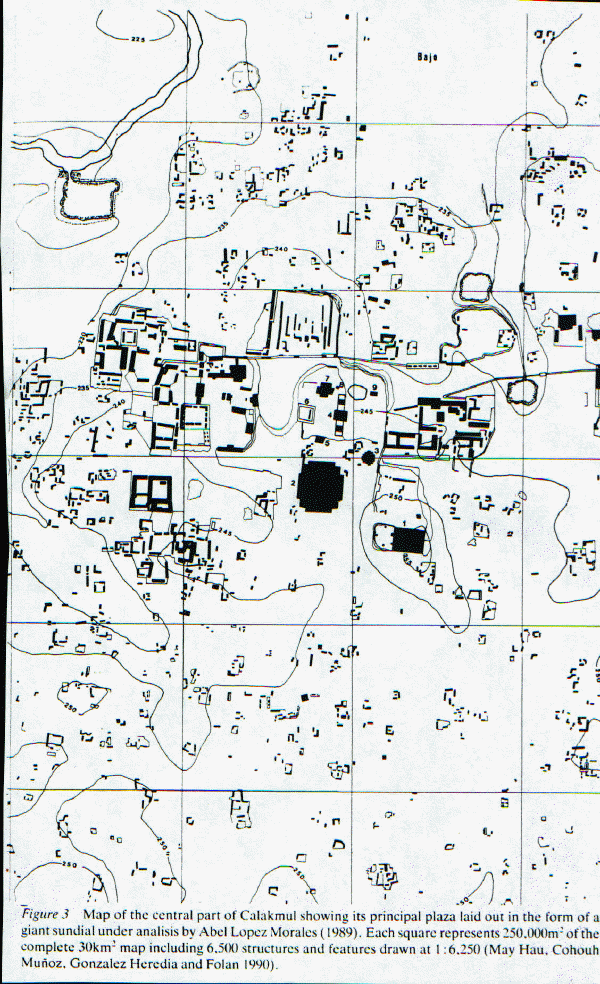
This site map is taken from "Calakmul: New Data From an Ancient Maya Capital in Campeche, Mexico," by William J. Folan. It appeared in Latin American Antiquity (vol. 6, no. 4) in 1995. Structures I-IX are labeled, and brief descriptions of some of the structures, paraphrased or excerpted from Ramon Carrasco's on-line paper "Calakmul: The Archaeology of a Superpower," appear below.

Structure I has proportions similar to Structure II.
"Structure II, which occupies the extreme south of the Grand Plaza, is a foundation of monumental proportions with a surface area of more than 100 meters (331 ft) on each side. The presence of pre-Classic ceramics in unsullied deposits at an open tunnel in this building shows that its fill corresponds to that of a substructure of the late pre-Classic era. Its sequence of construction preserves at least three substructures and four architectural phases: the first two, assoicated with ceramics in sealed contents; the second phase corresponds to the early Classic (250-600 A.D.) era."
Carrasco describes Structure III as a "'palace' in the classic Peten style." Structure III is unique among the main buildings at Calakmul in that it, unlike the others, never underwent any significant modifications during the entirety of occupation at Calakmul. Carrasco believes that this is because it housed "one of the most ancient lineages of Calakmul."
This structure represents one of the most complete building architectural sequences at Calakmul--the high pre-Classic through the terminal Classic. Guarding the entrance of one of its substructures is a carving of a leader "who emerges from a crevice in the monster of the earth." Carrasco believes that this carving may be a depiction of the legendary Cu-Ix, "the principal protagonist in the alliances among Calakmul, Naranjo, and Caracol in their struggle against the power of Tikal."
Not visible in the map shown above, Structure XI is a ballcourt situated in public space in Plaza I of the Great Acropolis. The structure represents architecture at Calakmul in the second half of the late Classic era. Also of note, is the spacial relationship between Structure XI and Structure XIII as Carrasco believes that this may be a symbolic arrangement linked to the myth of the hero twins in the Popol Vuh and their descent into Xibalba.